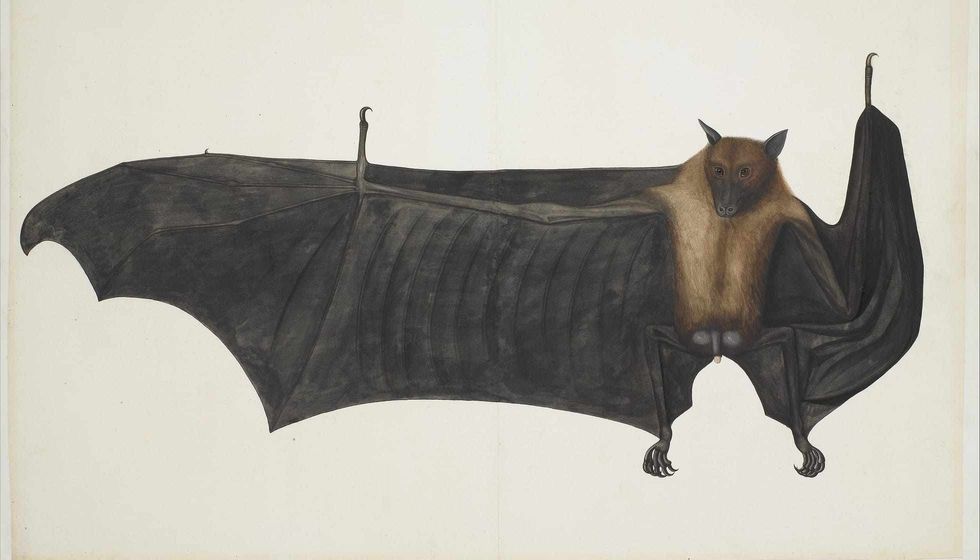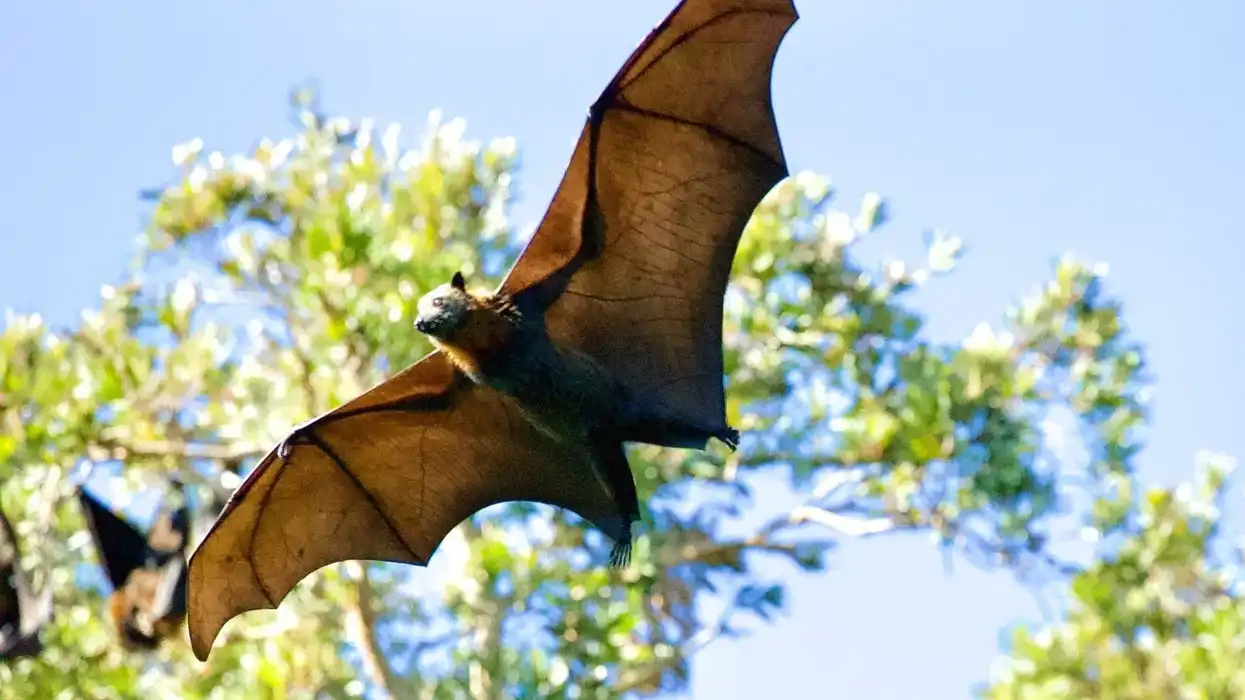Bats are warm-blooded creatures of the family Chiroptera. With their forelimbs adjusted as wings, they are the lone vertebrates who love taking flights late at night.
Bat species are more flexible than birds, flying with their extremely high intelligence as known by their history. The second-biggest family of well-evolved creatures after rodents, bats contain about 20% of all ordered vertebrate species around the world, with more than 1,400 species.
These were generally separated into two suborders, natural product eating megabats, and the echolocating microbats.
Haplonycteris fischeri species is discovered distinctly in a portion of the Philippine Islands at heights going from under 328-4921.2 ft( 100 m-1,500 m). Fischer pygmy fruit bats, otherwise called flying foxes or megabats, are the 197 species of bats that make up the suborder Megachiroptera, found throughout the jungles of Africa, Asia, and Oceania, of which 186 are surviving.
One of the best resources regarding these species is 'Cytogeography of Philippine bats (Mammalia: Chiroptera), Rickart Eric A, Jennifer A. Mercier, and Lawrence R. Heaney.' Here are some of the most important facts about the pygmy fruit bat species from the family Pteropodidae for your perusal. Afterward, do check our other articles on the tawny owl and pileated woodpecker.
Pygmy Fruit Bat Interesting Facts
What type of animal is a pygmy fruit bat?
Mindanao Pygmy Fruit Bat species is a type of bat of the family Pteropodidae. According to the Fieldiana Zoology database, Pygmy Fruit Bat kingdom, phylum, class, order, family, genus are Animalia, Chordata, Mammalia, Chiroptera, Pteropodidae, Aethalops respectively.
What class of animal does a pygmy fruit bat belong to?
Mindanao pygmy fruit bat species belong to the mammal class of animals of the family Pteropodidae and genus Aethalops. Some of the most popular subspecies of pygmy fruit bat are Dayak fruit bats, Rousette fruit bats, dawn fruit bats, Mindanao pygmy fruit bat (Alionycteris paucidentata, Kock), and dwarf epauleted bats.
How many pygmy fruit bats are there in the world?
Pygmy fruit bat species from genus Aethalops has been placed under the Least Concern conservation status by IUCN as the population of this species is stable across the pygmy fruit bat range of habitat.
The only threat these mammals from family Pteropodidae and genus Aethalops face is from habitat loss through deforestation or the habitat being tuned into tourist hotspots.
Where does a pygmy fruit bat live?
Pygmy fruit bat's range of habitat comprises woodland forest regions and is rarely found somewhere else.
What is a pygmy fruit bat's habitat?
These bats are monotypic inside the family Haplonycteris. Pygmy fruit bat is endemic to the Philippines. The natural habitat for Epauleted bats is subtropical or tropical dry backwoods.
Who does pygmy fruit bat live with?
Pygmy fruit bat perches in trees, a portion of the huge types of Pteropus and Acerodon structure huge gatherings, these gatherings are called camps.
How long does a pygmy fruit bat live?
Pygmy fruit bats have been known to live for more than 10 years in the wild.
How do they reproduce?
According to the Fieldiana Zoology database, Haplonycteris fischeri, is the bat species with the longest known development of cycle and time frame. Females as a rule become pregnant when sexual development is reached.
Most parous females bat ovulate between late May and early July. Parturition is trailed by 10 weeks of lactation. The most extreme day-by-day change in photoperiod is just 40 seconds in the Philippine Islands.
What is their conservation status?
The IUCN Red List of threatened species have listed pygmy fruit bat's status as Least Concern, however, the Haplonycteris fischeri populace is quickly diminishing. Deforestation is the justification for putting these bats on the weak species (VU A1c) list.
The IUCN characterizes VU A1c as having endured a decrease of at any rate 20% more than 10 years because of loss of environment.
Pygmy Fruit Bat Fun Facts
What do pygmy fruit bats look like?
These bats have a dark brown, or pale gray-brown fur that extends up to the base of the forearms. The fur on the body is soft and thick. Blossom bats have average-sized ears which are round and brown with a distinctive white edge.

* Please note that this is an image of a lesser short-nosed fruit bat, not a pygmy fruit bat. If you have an image of a pygmy fruit bat, please let us know at hello@kidadl.com.
How cute are they?
A pygmy fruit bat is not cute yet not ugly. Pygmy fruit bats are just adorable while they hang on the forest trees. When seen from a distance they look cute but in appearance, pygmy fruit bats are a bit ugly.
How do they communicate?
Bats decipher sounds encompassing them utilizing their ears and discharge ultrasonic hints of such high frequencies, that a human ear can't hear them. Pygmy fruit bats utilize these sounds to the two arranges inside the space, chase, and speak with one another.
How big is a pygmy fruit bat?
A pygmy fruit bat is three times bigger than a bee hummingbird. They are exceptionally little vertebrates and they have a small body size of around 2.1-2.3 in (5.3-5.8 cm).
How fast can a pygmy fruit bat move?
Bats might be little, however, they're quick little creatures. Bats can fly at speeds of more than 60 mph (96.5 kph) or sometimes even more, as indicated by new research.
How much does a pygmy fruit bat weigh?
An adult pygmy fruit bat weighs an average of 0.5-0.6 oz (15-19 g), nearly 100 times lighter than a common megabat.
What are the male and female names of the species?
There is no specific name for a male and female pygmy fruit bat. Hence, they are known as males and females respectively.
What would you call a baby pygmy fruit bat?
Bats get back from relocation or stir from hibernation in the spring, and females begin birthing juvenile bats known as pups. Bat pups are little when they are born, however, they register an impressive growth rate.
What do they eat?
As an omnivore, the pygmy fruit bat eats fruits with its sharp teeth. It is known to benefit from the product of Ficus, and undoubtedly of plants of the class piper. Also, blossom bats might rely upon blossoms during specific pieces of the year.
Are they poisonous?
No, but Bats harbor more lethal infections than was recently suspected, researchers say. Specialists have discovered that henipaviruses, which spread to different creatures and people, and an illness that is like rabies are far and wide in a type of fruit bat found in Africa.
Would they make a good pet?
No, keeping native bats as pets is forbidden in the United States and several other countries. Their nature is also not friendly to be kept as pets. Though, they are not known to be aggressive towards humans.
Did you know...
Bats can discover their food in all-out murkiness. Pygmy fruit bats can eat up to 1,200 mosquitoes in 1 hr (60 min).
Some of the best-known subspecies of pygmy fruit bats are Dayak fruit bats, Rousette fruit bats, dawn fruit bats, Mindanao pygmy fruit bat (Alionycteris paucidentata, Kock), and dwarf epauleted bats
Bat droppings, called guano, are one of the most extravagant fertilizers.
The world's biggest bat species are flying foxes, which live on islands in the South Pacific.
The best resource around these mammals is the book 'Cytogeography of Philippine bats (Mammalia: Chiroptera), Rickart Eric A, Jennifer A. Mercier, and Lawrence R. Heaney.'
Pygmy fruit bat kingdom, phylum, class, order, family, genus are Animalia, Chordata, Mammalia, Chiroptera, Pteropodidae, Aethalops respectively.
Are fruit bats dangerous to humans?
Yes, these bats are extremely dangerous for humans. Fruit bats of the Pteropodidae family are the natural host of the Nipah virus. There is no treatment or vaccine available for this virus. They have sharp teeth which can pierce human skin on biting and lead to the transmission of the virus.
Do pygmy fruit bats drink blood?
No, a pygmy fruit bat doesn't drink blood. However, vampire bats have a significantly fascinating qualification, they are the lone vertebrates that feed completely on blood.
Here at Kidadl, we have carefully created lots of interesting family-friendly animal facts for everyone to discover! For more relatable content, check out these Guam rail facts and common kingfisher facts pages.
You can even occupy yourself at home by coloring in one of our free printable pygmy fruit bat coloring pages.
* Please note that the main image is of a fruit bat, not a pygmy fruit bat. If you have an image of a pygmy fruit bat, please let us know at hello@kidadl.com.









